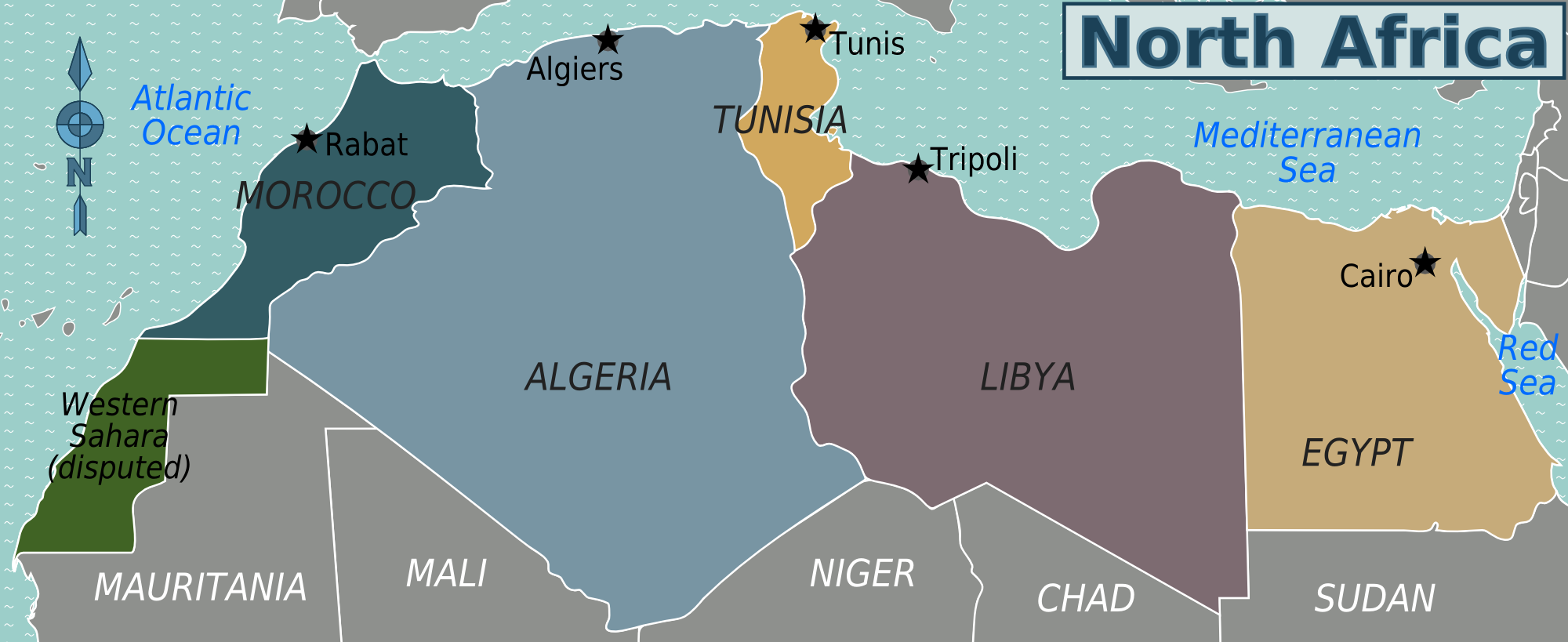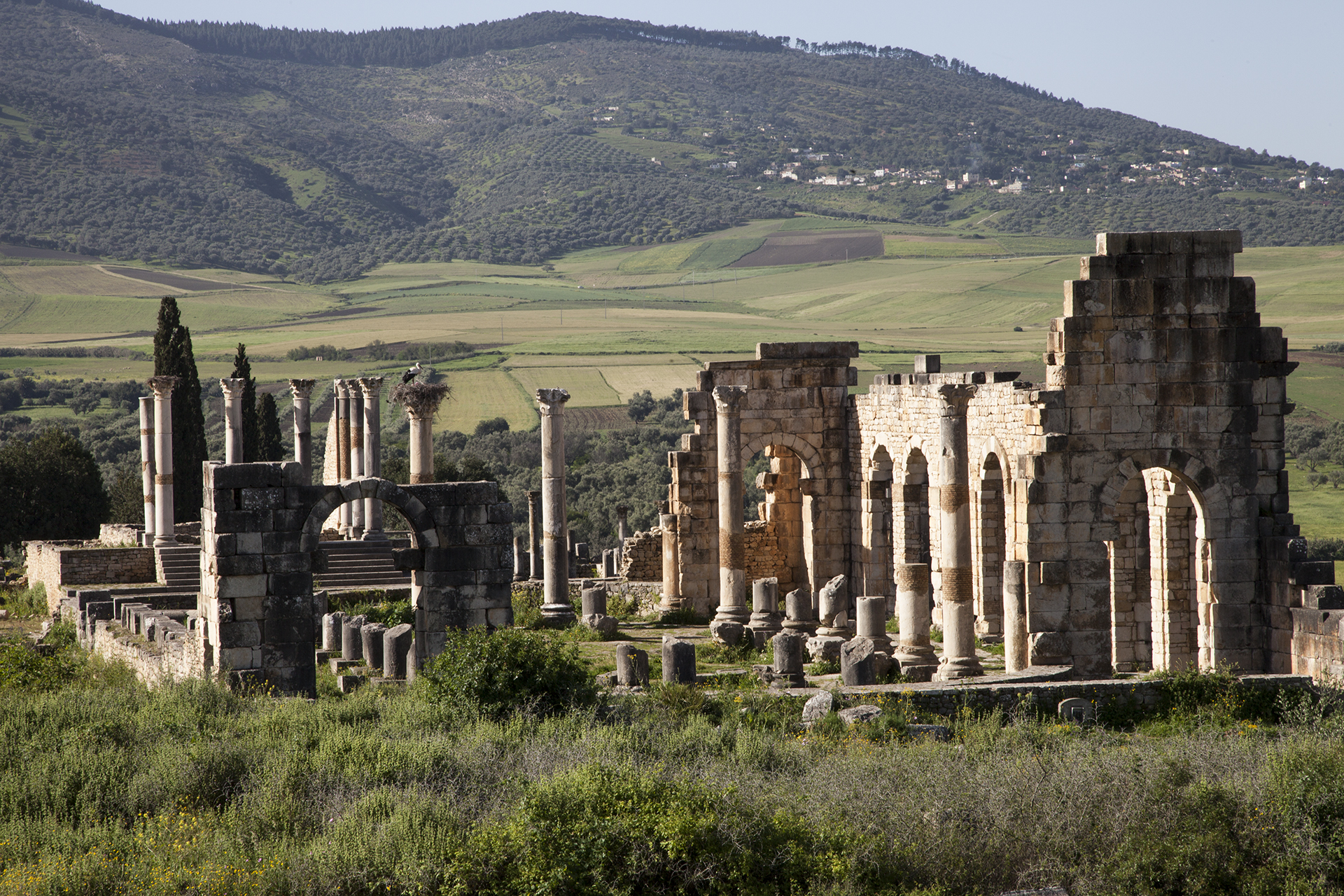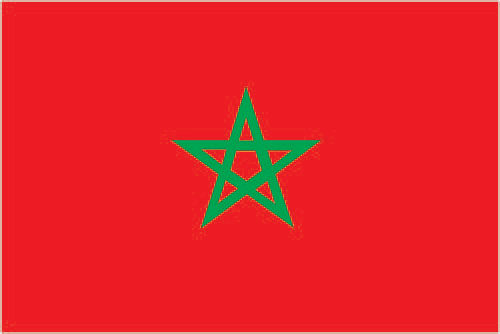
+37 Million
Population
60%
Covered by desert and arid land
+446,550
Square Kilometers
Get Ready to Started?
Morocco
Country Overview
Morocco, located in North Africa, is a country renowned for its rich history, diverse landscapes, vibrant culture, and warm hospitality. Here, ancient traditions live alongside a contemporary way of life.
Geographic Location
Morocco is strategically located on the northwest coast of Africa, bordered by the North Atlantic Ocean and the Mediterranean Sea. It shares land borders with Algeria to the east and southeast, and Western Sahara to the south, a region Morocco considers an integral part of its territory and largely governs. However, the status of Western Sahara remains disputed, with the Sahrawi people, led by the Polisario Front, advocating for independence. This prime location has historically made Morocco a significant cultural and commercial crossroads.
Map showing Morocco’s location in Africa. By Sanjay Rao
Getting Around
Major and Minor Airports:
- Mohammed V International Airport (Casablanca): The main international gateway, connecting Morocco to Europe, Africa, and the Americas.
- Marrakech Menara Airport (Marrakech): A hub for tourists visiting Morocco’s historic cities and desert regions.
- Rabat-Salé Airport (Rabat): Serving the capital city with regional and international flights.
- Fes-Saïss Airport (Fes): Connecting visitors to the cultural heart of Morocco.
- Tangier Ibn Battouta Airport (Tangier): Ideal for travelers exploring Morocco’s northern coast and Mediterranean connections.
Flying Times to Morocco:
Here are approximate flying times to Morocco from major global hubs:
- From Europe:
- London: Approximately 3–4 hours
- Paris: Approximately 2–3 hours
- From Asia:
- Dubai: Approximately 8–9 hours
- Tokyo: Approximately 16–17 hours
- From North America:
- New York: Approximately 7–8 hours (direct flight)
- Toronto: Approximately 7–9 hours (direct flight)
- From South America:
- São Paulo: Approximately 10–11 hours (with layovers)
- From Africa:
- Johannesburg: Approximately 9–10 hours (with layovers)
- Cairo: Approximately 5–6 hours
- From Oceania:
- Sydney: Approximately 20–22 hours (with multiple connections)
Popular Cities:
- Casablanca: Morocco’s largest city, known for its modern vibe and iconic Hassan II Mosque.
- Marrakech: The “Red City,” famous for its historic medina, souks, and the lively Jemaa el-Fnaa square.
- Rabat: The capital, blending historic sites like the Kasbah of the Udayas with a modern urban feel.
- Fes: The cultural and spiritual heart of Morocco, home to the world’s oldest university.
- Tangier: A coastal city where the Atlantic meets the Mediterranean, offering a mix of history and European influence.
Transportation: Getting around Morocco is straightforward, with plenty of transportation options to suit all needs. The train system, including the high-speed Al-Boraq, connects major cities like Casablanca, Tangier, and Marrakech efficiently. Buses, such as those run by CTM and Supratours, are reliable for intercity travel, while petit taxis handle short trips within cities and grand taxis connect towns. For exploring remote areas like the Atlas Mountains or the Sahara Desert, renting a car or joining a guided 4×4 tour is ideal.
Domestic flights are available for faster travel between cities, and in the desert, camel treks offer a traditional way to experience the dunes. Ride-hailing apps are also available in some urban areas for added convenience.
Did You Know?
Morocco is the world’s largest producer and exporter of argan oil, a rare oil that is used in both culinary dishes and as a cosmetic product for skin and hair.
Popular Destinations
- Marrakech: Known as the “Red City,” Marrakech is famous for its vibrant souks, the lively Jemaa el-Fnaa square, and stunning architecture, including the Koutoubia Mosque.
- Fes: A cultural and spiritual hub, home to the ancient medina and Al Quaraouiyine University, the world’s oldest existing university.
- Casablanca: Morocco’s largest city and commercial center, featuring the iconic Hassan II Mosque and a modern cosmopolitan vibe.
- Chefchaouen: The “Blue City,” nestled in the Rif Mountains, offers picturesque blue-painted streets and a relaxed atmosphere.
- Essaouira: A charming coastal town with a laid-back vibe, historic ramparts, and beautiful beaches, popular with windsurfers.
- Merzouga: A gateway to the Sahara Desert, perfect for camel treks and watching breathtaking desert sunrises and sunsets.
- Atlas Mountains: Ideal for hiking and exploring traditional Berber villages, with stunning views of Morocco’s diverse landscapes.
Social and Cultural Insights
People and Society: The population of Morocco is ethnically diverse, with Arab-Berber heritage being predominant. This diversity is reflected in the country’s linguistic landscape, with Arabic and Berber as official languages. Darija (Moroccan Arabic) is widely spoken, while Berber languages like Tamazight, Tachelhit, and Tarifit are used regionally. Additionally, French is common in business and education, Spanish is spoken in the north, and English is increasingly popular. The Moroccan society values hospitality, family, and traditions. The majority religion is Islam.
Culture: Moroccan culture is a fusion of Arab, Berber, and European influences. Morocco is renowned for its music, art, cuisine, and festivals, which include:
- Traditional music like Gnawa and Andalusian classical music.
- Art that features intricate Islamic calligraphy and zellige tile work.
- Festivals such as the Fes Festival of World Sacred Music and Marrakech International Film Festival.
- Cuisine known for dishes such as tagine, couscous and mint tea.
Cultural Etiquette and Tips: In Morocco, respect for tradition is key. Greetings often begin with a handshake or a friendly “Salam Alaikum,” and modest dress is appreciated, especially in smaller towns or near religious sites. Moroccans are known for their warmth and hospitality—sharing tea is a cultural staple, and you’ll often be invited to join in. When exploring bustling souks, bargaining is expected and can even be fun when done with good humor. Always ask before taking photos, particularly in markets or of people, and be mindful of prayer times, as religion is woven into daily life.
Public Holidays:
- New Year’s Day: January 1
- Independence Manifesto Day: January 11 (commemorating Morocco’s push for independence from French colonial rule).
- Labour Day: May 1
- Throne Day: July 30 (celebrating the accession of King Mohammed VI to the throne).
- Green March Day: November 6 (marking the 1975 peaceful march into Western Sahara).
- Independence Day: November 18 (celebrating Morocco’s independence from France and Spain in 1956).
- Eid al-Fitr: Date varies (celebrating the end of Ramadan).
- Eid al-Adha: Date varies (Festival of Sacrifice).
- Islamic New Year (Hijri New Year): Date varies
- Mawlid al-Nabi: Date varies (commemorating the birth of Prophet Muhammad).

Volubilis Ruins, near Meknes, Morocco. Photo by Subhros.
Climate and Natural Highlights
Climate: Morocco’s climate varies depending on the region. Coastal areas like Casablanca and Rabat enjoy a mild Mediterranean climate, with warm summers and cool, wet winters. In contrast, the inland and desert regions, such as Marrakech and the Sahara, experience scorching summers and cooler nights. Spring (March to May) and autumn (September to November) are the best times to visit, offering comfortable temperatures for exploring the cities, mountains, and deserts.
Sunrise and Sunset Times: Morocco enjoys plenty of sunshine throughout the year. In summer, the sun rises around 6:00 AM and sets by 8:30 PM, while in winter, sunrise is closer to 7:30 AM and sunset around 5:30 PM. Early mornings and late afternoons are ideal for outdoor activities, especially during the hotter months.
Wildlife and Natural Landscapes: Morocco’s natural beauty is diverse and captivating. The Atlas Mountains offer breathtaking views and opportunities for trekking, while the Sahara Desert boasts endless dunes and stunning starlit skies. Along the coast, you’ll find scenic beaches and lush wetlands that attract migratory birds. From palm groves to oases, Its landscapes are as varied as its culture.
Economic and Political Overview
History: Morocco’s history is deeply intertwined with various cultures, including Berbers, Arabs, and various European powers. It became a French and Spanish protectorate in the early 20th century until gaining independence on March 2, 1956. Morocco gained independence from France and Spain in 1956.
Government and Politics: Morocco is a constitutional monarchy with a parliamentary system, with King Mohammed VI reigning since 1999. The king holds significant executive powers, including the ability to dissolve parliament. The country has taken strides towards democratic reforms, especially after the Arab Spring, with increased powers given to the parliament and prime minister to foster a more participative political system.
Economy: The economy of Morocco is diverse, with agriculture, mining and manufacturing playing significant roles. It is the world’s largest exporter of phosphates. Tourism also plays a crucial role in the economy, with Morocco being famous for its imperial cities, Mediterranean beaches, and mountain ranges.
Safety, Health, and Entry Requirements
- Safety and Travel Advisories: Morocco is generally safe for tourists, but it’s advisable to stay updated with travel advisories from official sources, exercise caution in crowded areas, and follow local customs such as dressing modestly, respecting religious practices, etc. Being mindful of these customs will enhance your travel experience and show respect for the local culture.
- Healthcare and Vaccinations: Healthcare facilities in Morocco vary, with private healthcare providing high standards relative to the region. Travelers are advised to have comprehensive health insurance and check vaccination requirements and recommendations.
- Visa Requirements and Entry Procedures: Citizens from various countries may visit Morocco without a visa for stays up to 90 days. For extended stays or further information, contact the Moroccan embassies or consulates to confirm the latest visa requirements based on your nationality.

Region
Capital City
- Rabat
Currency
- The Moroccan Dirham (MAD)
Languages
- Arabic
- Berber
- French
- Spanish
- English
Timezone
- Western European Time (WET), UTC+0.
- United States

